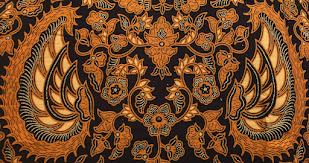Getting to Know Solo Batik, a Typical Javanese Batik Type with Global Excellence
Background, Types, and Uses of Solo Batik
A. Background of Solo Batik
Batik is a pictorial cloth that is produced with a certain technique using wax drawn on the cloth, so that the color does not absorb on the part that is coated with wax. Batik itself has been known in Indonesia for a long time, but each region has different characteristics and characteristics.
Batik Solo, or also known as Batik Surakarta, is a traditional Indonesian batik pattern that originates from the city of Solo (Surakarta) in Central Java, Indonesia. Batik Solo is known for its unique style, color, and design, which reflects the local culture and heritage of the Solo region.
The Batik Solo pattern features a wide range of motifs, including geometric patterns, floral designs, and other abstract forms. The patterns are created using the traditional batik process of applying wax to the fabric to create a resist, and then dyeing the fabric in a particular color. The waxed areas resist the dye and remain the original color of the fabric.
Batik Solo is often done in bright and vibrant colors, such as red, blue, and yellow, and is used to create traditional Javanese clothing such as batik sarongs, batik kebaya (blouse), and batik dresses. The pattern has cultural and historical significance in Solo, and it is recognized as one of Indonesia's intangible cultural heritage.
Batik Solo is appreciated for its intricate and detailed design, and it is often used for formal occasions such as weddings, traditional ceremonies, and other important events. The patterns and colors of Batik Solo are unique to the region and reflect the rich cultural heritage of Central Java.
B.Types and Uses of Solo Batik
Solo Batik has unique characteristics and is easy to recognize. Solo batik motifs usually have large sizes with contrasting colors and unique motifs. The type of Solo batik itself consists of several types, such as Sidomukti Batik, Parang Batik, Kembang Goela Batik, Sekar Jagad Batik, and many more.
The use of Solo Batik itself varies greatly, ranging from traditional clothing, casual clothing, to fashion needs. Solo Batik is widely used by the people of Solo and its surroundings, and has even become a regional cultural identity that is rich in art and beauty.
Solo batik is a type of batik typical of Central Java which has its own characteristics and uniqueness. Here are some popular types of Solo batik:
- Sidomukti batik:Sidomukti batik is a traditional Javanese batik pattern that originates from the city of Solo (also known as Surakarta) in Central Java, Indonesia. The word "Sidomukti" means "always victorious" in Javanese.This batik pattern typically features floral motifs, often in a repetitive geometric arrangement. The motifs are created using the traditional batik process, which involves applying wax to the fabric to create a resist before dyeing the fabric in a particular color. The waxed areas resist the dye and remain the original color of the fabric.Batik Sidomukti is known for its intricate and detailed designs, and it is often used to create elegant batik clothing, such as batik sarongs, batik shirts, and batik dresses. It is a popular choice for formal occasions, such as weddings, as well as for everyday wear. Sidomukti batik is highly valued in Indonesia for its cultural and historical significance, and it is recognized as a UNESCO Intangible Cultural Heritage of Humanity.
- Batik Parang:Parang batik is another traditional Javanese batik pattern that originates from the city of Solo in Central Java, Indonesia. The word "Parang" means "knife" in Javanese, which refers to the sharp angles and diagonal lines that make up the pattern. The Batik Parang pattern consists of diagonal rows of repeating "s" or "z" shapes, which are created using the traditional batik process of applying wax to the fabric before dyeing it. The pattern is often done in shades of blue, brown and white, but can also be found in other colors.The Batik Parang pattern has deep cultural and spiritual significance in Javanese culture. It is believed to have been inspired by the waves of the ocean, which symbolize the continuous flow of life. In Javanese tradition, the pattern is also associated with protection, strength and good luck. Batik Parang is often used for special occasions such as weddings, and it is also used to make traditional Javanese clothing such as batik sarongs, batik shirts and batik dresses.
- Batik Sekar Jagad:Batik Sekar Jagad is a traditional Javanese batik pattern that originates from the city of Yogyakarta in Central Java, Indonesia. The name "Sekar Jagad" means "flowers of the universe" in Javanese, which reflects the pattern's floral motifs that represent the beauty of the natural world.The Batik Sekar Jagad pattern features a symmetrical and repetitive design of flowers, leaves, and vines, often arranged in circular or diamond-shaped patterns. The pattern is created using the traditional batik process of applying wax to the fabric to create a resist, and then dyeing the fabric in a particular color. The waxed areas resist the dye and remain the original color of the fabric.Batik Sekar Jagad is often done in bright and vibrant colors, such as red, yellow, blue and green, and is used to create traditional Javanese clothing such as batik sarongs, batik kebaya (blouse), and batik dresses. The pattern has deep cultural and spiritual significance in the Javanese tradition, representing beauty, harmony and balance in nature. Today, Batik Sekar Jagad is appreciated for its intricate and detailed design and is recognized as one of Indonesia's intangible cultural heritage.
- kembang goela Batik:Batik Kembang Gulo (sometimes spelled "Kembang Gulung") is a traditional Javanese batik pattern that originates from the city of Pekalongan in Central Java, Indonesia. The name "Kembang Gulo" means "sugar flower" in the local Javanese language, which reflects the pattern's sweet and charming floral motifs.In Javanese tradition, Kembang Gulo Batik is often associated with fertility, prosperity and harmony. The pattern features a repeating design of flowers, leaves, and vines, often arranged in a symmetrical pattern. The floral motifs are believed to represent the beauty of nature and the abundance of blessings from the universe.Kembang Gulo batik is often done in bright and vibrant colors, such as red, blue and yellow, and is used to create traditional Javanese clothing such as batik sarongs, batik kebaya (blouse), and batik dresses. The pattern is highly valued for its beauty and cultural significance, and it is recognized as one of Indonesia's intangible cultural heritage. Today, Batik Kembang Gulo is appreciated for its intricate and detailed design and is a popular choice for both traditional and modern fashion.
- Sogan batik:Batik Sogan is a traditional Javanese batik pattern that originates from the city of Solo in Central Java, Indonesia. The name "Sogan" comes from the Javanese word for the bark of the Soga tree, which is used to produce a reddish-brown dye that is often used in creating this type of batik.The Batik Sogan pattern features a repeating design of abstract shapes and patterns, often arranged in a symmetrical pattern. The pattern is created using the traditional batik process of applying wax to the fabric to create a resist, and then dyeing the fabric in a particular color. The waxed areas resist the dye and remain the original color of the fabric.Batik Sogan is typically done in shades of brown, black and white, and is used to create traditional Javanese clothing such as batik sarongs, batik shirts and batik dresses. The pattern has cultural and historical significance in Solo, and it is recognized as one of Indonesia's intangible cultural heritage.Batik Sogan is appreciated for its simple yet elegant design, and it is often used for formal occasions such as weddings and other ceremonies. The use of the Soga tree bark dye gives the batik a unique and distinctive color, and the intricate patterns create a timeless and classic look.
Those are some types of Solo batik that are popular and have unique characteristics. Each type of Solo batik has its own meaning and philosophy that enriches Indonesian cultural values.
C. The Advantages of Solo Batik in the Eyes of Society and the World
Solo Batik has worldwide advantages, one of which is its high quality and unique characteristics. Batik Solo is also the choice for famous designers and fashion designers to produce exclusive fashion products. In addition, Solo batik has also received world recognition through UNESCO's listing as Indonesia's intangible cultural heritage in 2009.
D. Conclusion
Solo Batik is a type of Javanese batik with unique characteristics and worldwide excellence. Solo batik cloth has a variety of interesting motifs and patterns, so it is often used as traditional clothing, casual clothing, and fashion. With UNESCO recognition as Indonesia's intangible cultural heritage, Solo batik is increasingly getting world attention as one of Indonesia's cultural assets that should be protected and preserved.


.jpeg)
.jpeg)
.jpeg)






No comments: